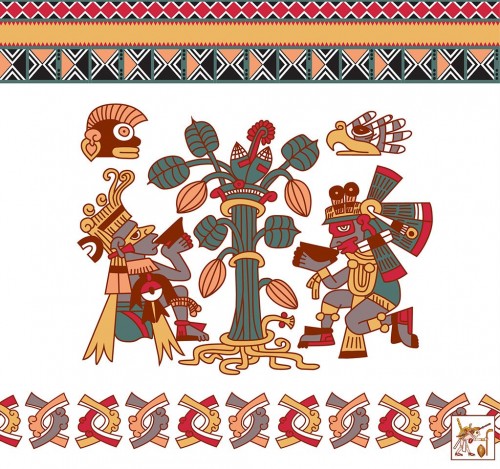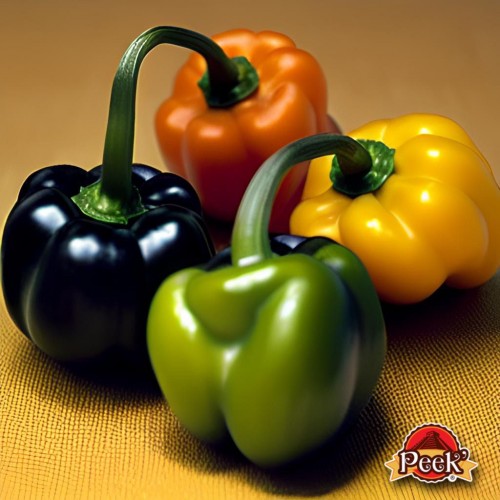-
 El cacao
El cacaoLEGEND OF CHOCOLATE
Chocolate was born in Mexico where it has been drunk since pre-Hispanic times, with the conquest it traveled to Europe and from there to the whole world.
According to legend, chocolate was born in the following way ...
Quetzalcóatl gave the Toltecs the cocoa beans, so that his people would be well fed and in that way they could be studious, wise, artists and artisans.
Quetzalcóatl stole the cacao tree from paradise where the gods lived and planted the little bush in Tula. After he planted it, he asked Tláloc to send rain to the ground so that the plant could feed and grow.
Then he went to visit Xochiquetzal, goddess of love and beauty, and asked him to give the tree beautiful flowers. Over time the plant flourished and produced cocoa fruits.
This is the legend that is told about the origin of cocoa in Mexico, a fruit that until now continues to be highly valued throughout the world.
THE CACAOTEROCocoa comes from a fruit of tropical origin that is born from the cocoa tree, a small tree that grows in tropical environments.
The origin of the cocoa tree is found in Tabasco, Campeche and Chiapas, on the Pacific coast and practically in all the areas where the Mayan culture developed.
SOURCE: https://www.mexicodesconocido.com.mx/chocolate-historia-y-leyenda.html -
 Why are chili peppers hot?
Why are chili peppers hot?The itching we experience when eating chili peppers or hot peppers is due to a chemical compound called capsaicin.
Capsaicin activates pain receptors in the tongue and mouth, sending a signal to the brain that it interprets as a stinging or burning sensation. As the concentration of capsaicin increases, the intensity of the itching sensation increases.
Interestingly, capsaicin does not produce a specific taste, but rather stimulates pain receptors independently of the taste of food.
But why do plants produce capsaicin? Its function is believed to be to protect the plant from herbivorous predators, since mammals cannot tolerate the heat and avoid eating the chilies. However, birds are less sensitive to capsaicin and often feed on the chili peppers, thus helping to disperse the seeds.
The amount of capsaicin varies from one chili variety to another, and depends on factors such as maturity, cultivation, and environmental stress. Some varieties of chili are much hotter than others, due to their high concentration of capsaicin.
In short, chili peppers sting us because of the capsaicin. This chemical compound stimulates pain receptors in the tongue and mouth, creating a stinging or burning sensation. Capsaicin is produced by the plant to protect itself from herbivores, and its amount varies depending on the variety of chili.
-
 Scoville scale (SHU) and capsaicin
Scoville scale (SHU) and capsaicinThe Scoville scale is a way of measuring how hot a chili is. The scale was invented by the pharmacist who created the organoleptic test called Wilbur Scoville in 1912 who wanted to measure the degree of heat or pungency of chili peppers and in turn the amount of capsaicin in a chili pepper. Capsaicin is what makes a chili pepper hot.
This scale applies to the fruits of plants of the genus Capsicum since its principle is to measure the amount of capsaicin present, the active component of this genus.
Interestingly, capsaicin does not produce a specific taste, but rather stimulates and activates pain receptors in the tongue and mouth, sending a signal to the brain that it interprets as a stinging or burning sensation. As the concentration of capsaicin increases, the intensity of the itching sensation increases.
The spiciness of chiles is a very important characteristic in world gastronomy, especially in countries like Mexico and India. The Scoville scale (SHU) is a measure of the amount of capsaicin present in a chili, which is the compound responsible for its heat.
The Scoville scale is measured in Scoville Units (SHU). If a chili has 0 SHU, it will not be spicy at all. But if a chili has 1 million SHU, it will be extremely hot. So be careful when eating very hot chilies!
The dilution of capsaicin on the Scoville scale is variable and depends on the amount of capsaicin in the pepper being measured. However, the Scoville scale generally dilutes capsaicin at a ratio of 1:16, meaning one part chili is mixed with 16 parts sugar water to make the first dilution.
Further dilutions of this solution are then continued until the sting is no longer perceptible to the tasters. Depending on the amount of capsaicin present in the chili, many or few dilutions may be needed to reach the point where the heat is no longer felt.
There is another way to measure capsaicin units and it is high performance liquid chromatography (HPLC) is a chemical analysis technique used to separate and quantify the different chemical compounds present in a sample.
To carry out an accurate measurement of the heat of chili peppers, a combination of both techniques can be used. Capsaicin can first be extracted using a chemical extraction technique, then the amount of capsaicin present in the sample can be measured using HPLC. Finally, the heat level can be expressed on the Scoville scale so that the consumer has an idea of the heat level of the chilies.
In short, chili peppers make us itch because of the capsaicin. This chemical compound stimulates pain receptors in the tongue and mouth, creating a stinging or burning sensation. Capsaicin is produced by the fruits of the plants of the genus Capsicum to protect themselves from herbivores, and its quantity varies according to the variety of chili and can be measured with the two different techniques; Scoville Scale (SHU) and High Performance Liquid Chromatography (HPLC).
But despite its intensity, we continue to enjoy chili at every meal. It's like we can't live without it!
Long live chili!









